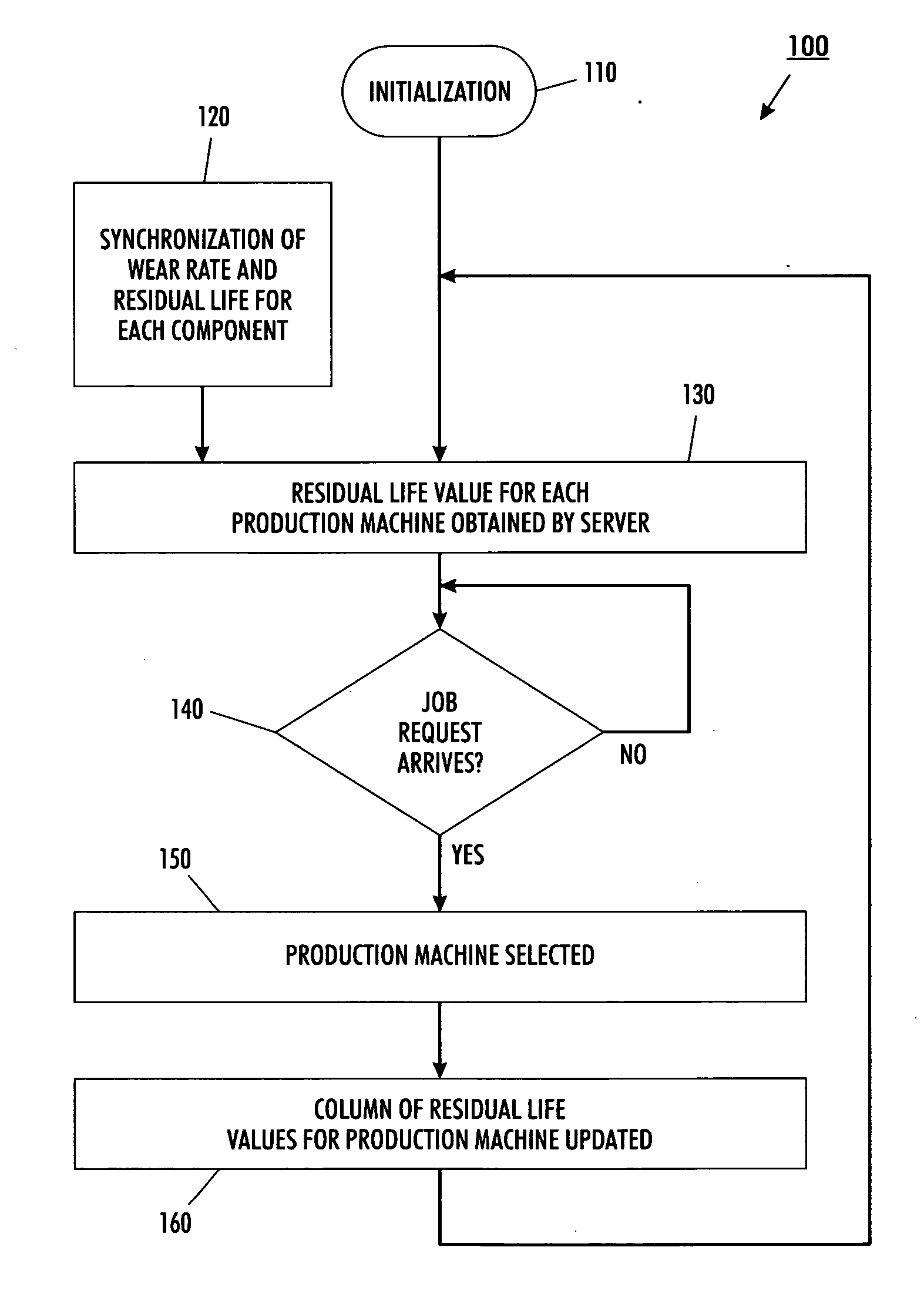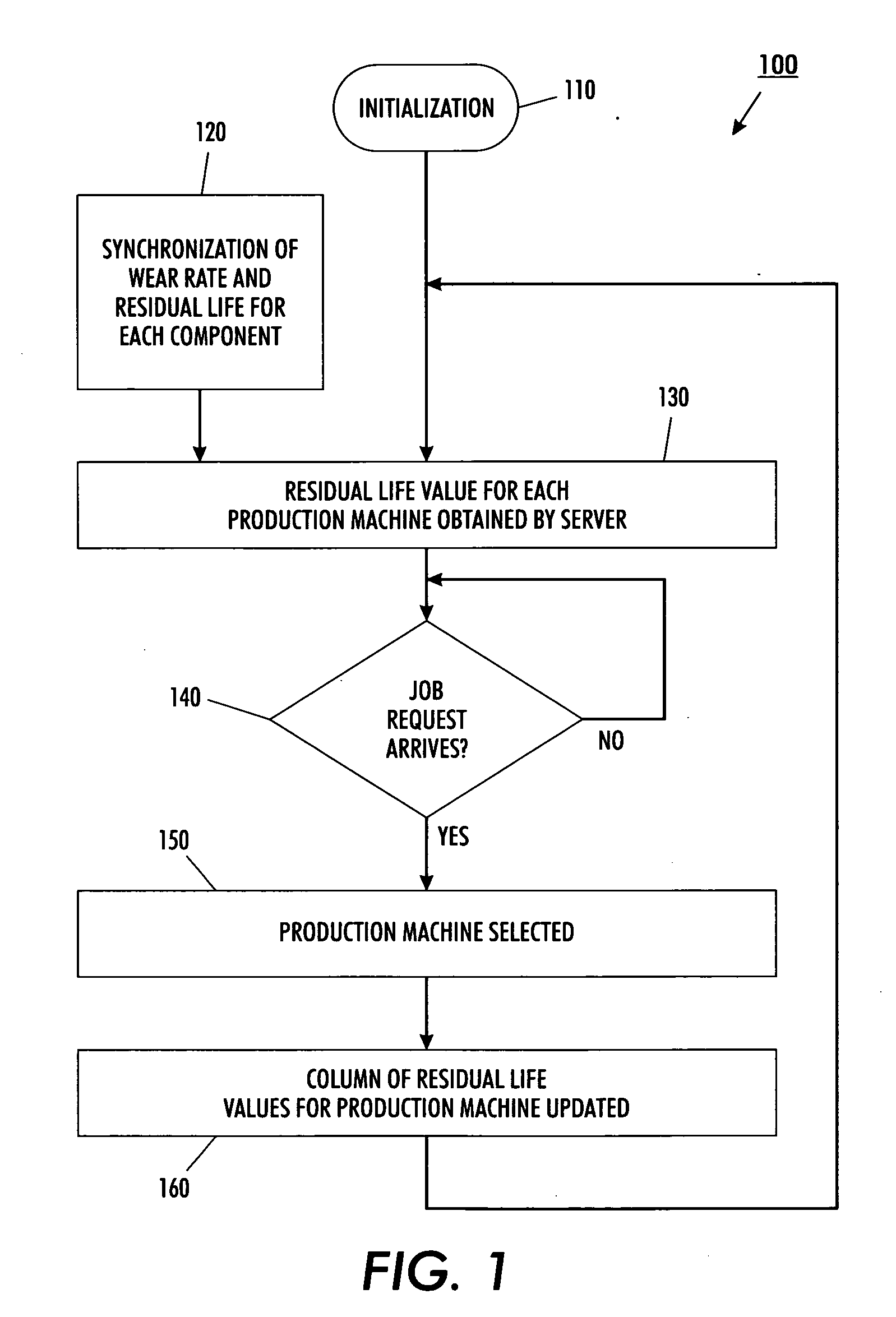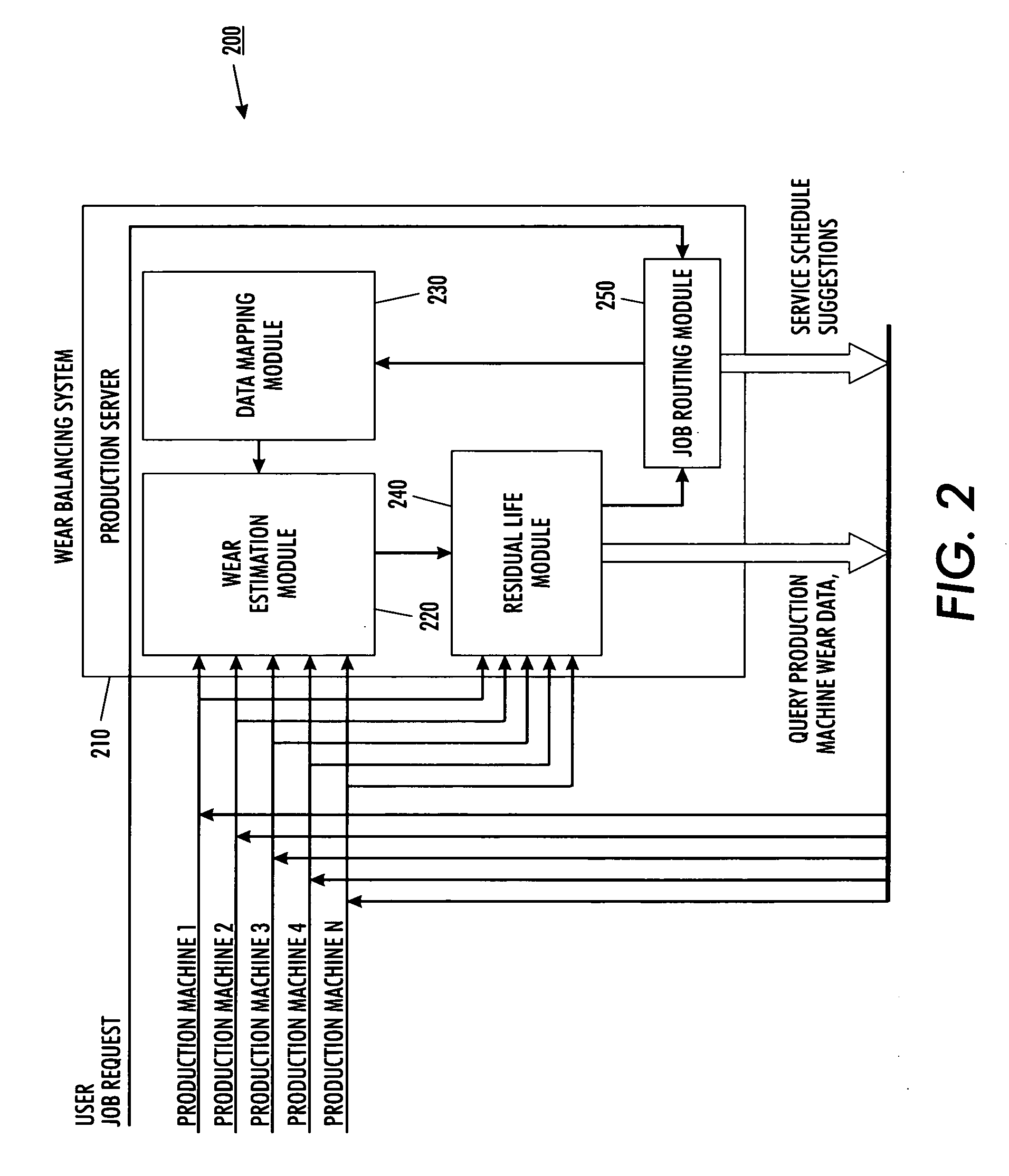Wear-based load-balancing for production networks
- Summary
- Abstract
- Description
- Claims
- Application Information
AI Technical Summary
Benefits of technology
Problems solved by technology
Method used
Image
Examples
Embodiment Construction
[0014] Printers as part of the Information Technology infrastructure of a company enable new prognosis, diagnosis, and maintenance technologies. Networked printers in a customer site can exchange data using the existing network without privacy or security concerns as would be the case with sending such information to an external location. For example, every morning printers can broadcast their wear status in order to determine a plan for distributing the print jobs in the network. An underlying assumption in the deployment of a wear-balancing print server routing scheme is that by clustering service calls to all or a subset of printers a department's service costs would be reduced as service calls are consolidated. From the viewpoint of the servicing company, technicians would be more efficiently utilized, since less time would be expended on transportation to and from customer sites.
[0015] A desirable wear pattern may cause all machines to wear at the same rate, allowing maintenan...
PUM
 Login to View More
Login to View More Abstract
Description
Claims
Application Information
 Login to View More
Login to View More - R&D
- Intellectual Property
- Life Sciences
- Materials
- Tech Scout
- Unparalleled Data Quality
- Higher Quality Content
- 60% Fewer Hallucinations
Browse by: Latest US Patents, China's latest patents, Technical Efficacy Thesaurus, Application Domain, Technology Topic, Popular Technical Reports.
© 2025 PatSnap. All rights reserved.Legal|Privacy policy|Modern Slavery Act Transparency Statement|Sitemap|About US| Contact US: help@patsnap.com



